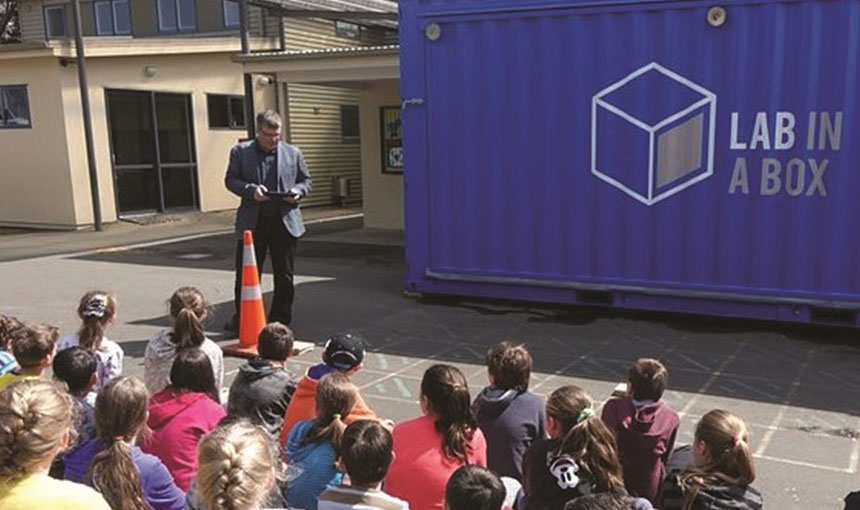Hands-on – and hands-in – science
Dissecting rats, extracting honey and mixing potions were some of the activities explored by more than 6,500 North Islanders thanks to a mobile science laboratory.

Lab-In-a-Box (LIAB) was a staffed science laboratory housed in a 20-foot shipping container that toured rural schools and communities. With support from the BioHeritage Challenge, it aimed to spark an interest in science and in 2018 completed a 27-stop tour of the North Island.
“We believe we have provided some of the only science engagement some of these communities have ever seen, and spread both enthusiasm for science, and trust in scientists,” says project leader Peter Dearden of the University of Otago.
LIAB is one way the BioHeritage Challenge is sharing findings from research that aims to protect Aotearoa New Zealand’s land and freshwater ecosystems. Funding from BioHeritage was used by LIAB to support a focus on conservation genetics, pest control and eradication, and to initiate conversations about the use of new technologies such as genetic engineering.
“One of our key activities was talking about pest control and bio-heritage – our natural and production ecosystems – to spark conversations between students and parents about the value of pest control, the different available methods and their implementation.
“Triggering these conversations, especially in rural communities, will be key in implementing Predator Free 2050’s goal of eradicating at least one small mammalian predator from the South Island by 2025. It’s a critical part of future pest control efforts.”
The message was taken to rural communities by introducing ideas and performing experiments around the areas of pest control, marine diversity, pollination and insect diversity.
“Almost 6,500 North Island students and parents got to look closely at bees, catch eels, make bees wax candles, explore slime and test 3D shapes. They have experienced real hands-on – and sometimes hands-in – science.”
Using microscopes, chemicals and computers, LIAB aims to capture the minds of budding rural scientists – the future guardians of Aotearoa New Zealand’s land and waterways, Peter says.
“They were dropped into the deep-end of science, learning how to protect and nurture their land for their own children, and to discover what makes their area special and important to all of New Zealand.
LIAB was a collaboration between the University of Otago, Otago Museum, Victoria University of Wellington, the Bio-Protection Research Centre and Te Papa. In addition to funding from the BioHeritage Challenge, it was supported by the Unlocking Curious Minds contestable fund.